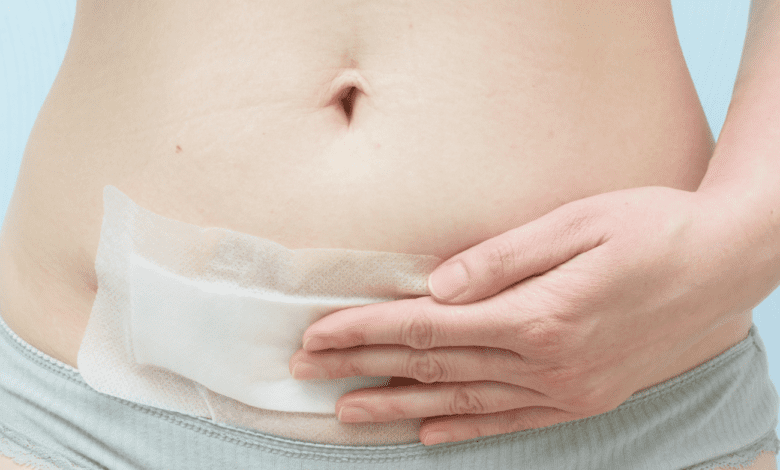What the doctor will not tell you at 6 weeks post partum after cesarean.

A Cesarean birth is a major abdominal surgery and a birth wrapped in an experience. But there are some things you should know about your recovery that your Ob-GYN probably won’t share.
What most parents think at six weeks postpartum, especially after a cesarean, is, “Wait, that’s it? What now?” The the appointment takes about two to three minuteswhere the doctor or nurse checks your incision and your cervix, and as long as you’re not bleeding and you’re still breathing, you are clear
I remember going to my six-week postpartum appointment after my cesarean. At that point, I was still a little sore and a little anxious because I didn’t know the roadmap to a full recovery after an emergency cesarean.
My appointment consists of an abdominal exam (which took about five seconds) and a simple question about what birth control options I want to. At the end of the session, I was told to check in after six monthsand that’s it.
I really remember the feeling of confusion and felt a little lost. My patients shared the same sentiments about their six-week postpartum check-ups.
Unfortunately, postpartum recovery and care guidelines are lacking when it comes to cesarean care research, there are very few studies done and not a set of accurate data or timeline.
According to my clinical experience and available data, we have a Belly Birth recovery program that I offer to my clients. I wanted to share things that I usually look for, that GYNs often miss, and often, patients go untreated or undiagnosed for years.
Here are some things my patients are surprised to hear me say when they hear their doctor didn’t mention it to them.

1. Their bladder discomfort and frequency may be caused by the cesarean scar and the surgery itself
The bladder sits close to the C-Section scar, and the bladder is also moved during labor. The proximity of the scar and the manipulation can irritate the bladder and cause urgency or frequency to urinate.
Usually, it subsides on its own within a few days, but in some cases, it may persist unless treated. Some people may have trouble emptying the bladder even weeks after the actual birth, especially if they had to be catheterized multiple times after a cesarean.
It could be due to irritation or any trauma in the urethra or pelvic floor muscles. A study looked at postoperative urinary retention after surgery and cited anywhere between 5% to 70%.
This is most due to insensitivity used during surgery and usually returns to normal within six to eight hours after surgery. But if you keep getting into trouble urinating and having to strain to empty your bladder even at six weeks postpartum, mention it to the doctor.
2. Sudden severe pain in the abdomen, pelvic floor, or around the scar may be caused by scar tissue
Many patients report having sudden pain around their incision, even for a few weeks or months with some movements. For some it’s a few incidents here and there, and for others, it’s more frequent to the point that it affects their ability to move.
In my experience, this disease usually comes from scar tissueor a muscle or a nerve fiber trapped in the scar tissue caused sudden sharp pull there is movement.
Often, nothing shows up on an ultrasound in the GYN’s office, and patients are given pain meds or dismissed. This does not mean that your discomfort is not worth addressing.
The good news? There are things you can do to help. Reach for a pelvic floor physical therapist for Support. Also one cesarean scar care kit with tools to help you improve your scar’s mobility and flexibility, all the time slowly reduces scar tissue.

3. Retraining your breathing muscles after cesarean is just as important as retraining your abdominal muscles
A C-section is a major abdominal surgery. Because of the lack of feeling, the may reduce lung capacity, so your ability to breathe is affected. Your pelvic floor and diaphragm (the main breathing muscle) work together to manage intraabdominal pressure.
So, if you are shallow breathing, it can also affect the pelvic floor.
Many hospitals provide a spirometer after cesarean, but some don’t, so I ask the patient to bring their own. To improve lung functiondoing some breathing exercises again the first few hours after surgical delivery are important.
4. Your pelvic floor is affected by the c-section, and you may have pelvic floor symptoms even with a cesarean
This is a myth that the cesarean does not affect the pelvic floor.
A study followed postpartum moms for six years to study the effect of elective cesarean and uncomplicated vaginal delivery with pelvic floor symptoms.
It reported that those who had elective cesarean had more incidence of sexually transmitted diseasesabdominal and pelvic pain, while those with vaginal delivery have a greater chance of incontinence and prolapse.
5. Numbness and burning around the scar and abdomen may be due to nerve fibers trapped in the scar tissue
Many people experience numbness even years after cesarean; others may experience sensitivity, burning, or tingling pain weeks after surgery. The most common cause of this is nerve irritation or injury.
The operation itself affects the nerves, and scar tissue can also irritate or trap nerve fibers. It can lead to numbness or a burning sensation around the scar.
The good news is that most of these symptoms can be helped by a pelvic floor physical therapist who specializes in cesarean prep and recovery.
A good starting point after a cesarean is to work on breathing retraining, scar mobilization, core, pelvic floor strength, pelvic floor assessment for any type of tightness or pain, and bladder and bowel assessment as well.







